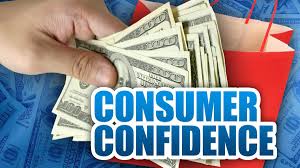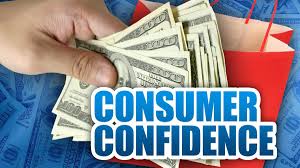
Expectations of a sharp revival of the economy were boosted in the United States with a more than expected consumer spending in the country in July. Analysts however say that the new found momentum in the economy could be lost because of the lingering novel coronavirus pandemic and the stimulus money given to people by the US government starts to run out.
After two straight monthly declines, a rise in personal income was noted in the report from the Commerce Department published on Friday. However the report also noted that a large part of the increase was because of the unemployment benefits which were increased by a weekly $600 supplement from the government. That additional amount program stopped on July 31. However compared to pre-pandemic levels, both consumer spending and income were much lower.
“The consumer is back spending at the shops and malls in July, but many of their purchases reflected pent-up demand following the pandemic lockdown,” said Chris Rupkey, chief economist at MUFG in New York. “The expenditures needed to fuel the economy’s recovery in August are a big question mark given the hit to personal income nationwide with the loss of those $600 weekly unemployment benefit checks.”
In July, there was a 1.9 per cent growth in consumer spending, which makes up more than two-thirds of the economic activity in the United States. The spending had frown by 6.2 per cent in June. Economists were expecting a growth of 1.5 per cent in consumer spending in July. Despite the growth in July, consumer spending was still about 4.6 per cent lower than the February growth number.
Goods like new motor vehicles were purchased by US consumers. There was higher spending in hotel and motel accommodation, dining out and healthcare. Consumer spending on services remained about 9.7 per cent from recovery because consumers still remained wary of exposure to the coronavirus even though spending on goods has rebounded above its pre-pandemic level.
For the services-based US economy, which as pushed into recession in February, this low spending on services is a bad omen. After a broad resurgence through the summer, there has been a slowdown in new Covid-19 infections. However there are many hot spots that are still showing new infections particularly at college campuses that have reopened for in-person learning.
In the second quarter, the contraction in the US economy was the steepest in the last 73 years with fall in consumer spending being the major cause of the fall in gross domestic product in the US.
Estimates for growth in the fourth quarter are being cut by economists even though economists are anticipating a sharp rebound in GDP in the third quarter primarily because of higher consumer spending.
A separate survey conducted by the University of Michigan and released on Friday showed a small growth in sentiment in August. Half of the consumers participating in the survey expect the US economy to get better this year itself but the overall economic conditions was viewed as unfavorable by many of the consumers, the survey found.
(Source:www.financialpost.com)
After two straight monthly declines, a rise in personal income was noted in the report from the Commerce Department published on Friday. However the report also noted that a large part of the increase was because of the unemployment benefits which were increased by a weekly $600 supplement from the government. That additional amount program stopped on July 31. However compared to pre-pandemic levels, both consumer spending and income were much lower.
“The consumer is back spending at the shops and malls in July, but many of their purchases reflected pent-up demand following the pandemic lockdown,” said Chris Rupkey, chief economist at MUFG in New York. “The expenditures needed to fuel the economy’s recovery in August are a big question mark given the hit to personal income nationwide with the loss of those $600 weekly unemployment benefit checks.”
In July, there was a 1.9 per cent growth in consumer spending, which makes up more than two-thirds of the economic activity in the United States. The spending had frown by 6.2 per cent in June. Economists were expecting a growth of 1.5 per cent in consumer spending in July. Despite the growth in July, consumer spending was still about 4.6 per cent lower than the February growth number.
Goods like new motor vehicles were purchased by US consumers. There was higher spending in hotel and motel accommodation, dining out and healthcare. Consumer spending on services remained about 9.7 per cent from recovery because consumers still remained wary of exposure to the coronavirus even though spending on goods has rebounded above its pre-pandemic level.
For the services-based US economy, which as pushed into recession in February, this low spending on services is a bad omen. After a broad resurgence through the summer, there has been a slowdown in new Covid-19 infections. However there are many hot spots that are still showing new infections particularly at college campuses that have reopened for in-person learning.
In the second quarter, the contraction in the US economy was the steepest in the last 73 years with fall in consumer spending being the major cause of the fall in gross domestic product in the US.
Estimates for growth in the fourth quarter are being cut by economists even though economists are anticipating a sharp rebound in GDP in the third quarter primarily because of higher consumer spending.
A separate survey conducted by the University of Michigan and released on Friday showed a small growth in sentiment in August. Half of the consumers participating in the survey expect the US economy to get better this year itself but the overall economic conditions was viewed as unfavorable by many of the consumers, the survey found.
(Source:www.financialpost.com)





